Ancient Mystery Of The Leo Petroglyphs In Ohio Created By An Unknown Native American Culture
Jan Bartek - AncientPages.com - Perched on a ridge near the small village of Leo in Jackson County, Ohio there are curious ancient petroglyphs that remain an unsolved ancient mystery.
The sandstone petroglyphs containing 37 images of humans, birds, animal, and human footprints, a fish, a snake, and other figures are a legacy of an unknown Native American culture. When scientists examined this ancient art, they realized there were two questions they could not answer.
Sandstone petroglyph near the village of Leo, Jackson County, Ohio. Image source
For one thing, researchers have been unable to identify the creators of these remarkable carvings. Another problem is the fact scientists cannot determine the meaning of these images. Were the petroglyphs deliberately made to depict daily life or do these carvings have a symbolic meaning?
The exact age of the petroglyphs found on the edge of an unglaciated Mississippian sandstone cliff 20–65 feet high remains undetermined, but it’s believed the carvings are about 1,000-year-old.
It has been suggested the carvings were made by the Fort Ancient culture, 1000 to 1650 A.D. that thrived in the areas of modern-day southern Ohio, northern Kentucky, southeastern Indiana, and western West Virginia. There is not much information about the Fort Ancient culture but is known these people were primarily farmers and hunters who lived in villages that had many circular or rectangular houses surrounding an open plaza.
View of the The Great Serpent Mound, one of the most important prehistoric effigy mound of Adema Culture, located on the Ohio river, Ohio, USA. Credit: Timothy A. Price and Nichole I - CC BY-SA 3.0
To begin with, they buried their dead in small burial mounds, but later their burial traditions changed, and they put to rest the deceased in a cemetery with no burial mounds. The Fort Ancient culture is perhaps most famous for the creation of the magnificent and great Serpent Mound of Ohio that is one of the most famous ancient earthworks of Most Famous North America.
Though other serpent mounds can be found in Mexico, Scotland, and Canada, Ohio's serpent mound is by far the largest and most interesting serpent mound in the world. One must add there is no conclusive evidence the Serpent Mound is a legacy of the Fort Ancient culture, but most scientists think these people were in fact the creators of this impressive ancient earthwork.
What are these images supposed to represent? Image source
This assumption has also led many to speculatee the Leo petroglyphs in Ohio were also made by the Fort Ancient culture, but we do not know this was the case with certainty.
Some of the Leo Petroglyphs suggest creators of these carvings were in contact with Europeans. This is interesting because although there are no historical records of contact between the Fort Ancient culture and the Europeans scientists have discovered a remarkable amount of European made goods from Fort Ancient sites, including brass and steel items, as well as glassware. The Fort Ancients were heavily affected by European disease, as well as the Beaver Wars period. This Native American culture vanished, but gradually.
Leo Petroglyph, face with headdress. Image source
Some of the mysterious Leo petroglyphs are exceedingly difficult to understand. Whoever did these carvings must have wanted to tell future generations something. Unless the petroglyphs were just produced as entertainment of course. What could be the meaning and purpose of some of these more abstract designs, including one that looks like a cartoon man with horns?
Written by Jan Bartek - AncientPages.com Staff Writer
Updated on July 20, 2024
Copyright © AncientPages.com All rights reserved. This material may not be published, broadcast, rewritten or redistributed in whole or part without the express written permission of AncientPages.com
Expand for referencesMore From Ancient Pages
-
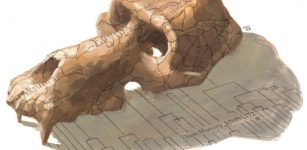 Can Baboons Solve The Ancient Mystery Of Punt?
Archaeology | Oct 25, 2023
Can Baboons Solve The Ancient Mystery Of Punt?
Archaeology | Oct 25, 2023 -
 Scientists Unravel The Mystery Of The Alexander Sawney Bean Legend & Cave-Dwelling Cannibals In Scotland
Myths & Legends | Sep 24, 2015
Scientists Unravel The Mystery Of The Alexander Sawney Bean Legend & Cave-Dwelling Cannibals In Scotland
Myths & Legends | Sep 24, 2015 -
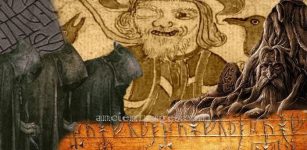 God Of The Gallows And How Odin Hanged Himself From Yggdrasil To Know Secrets Of Runes
Featured Stories | May 7, 2018
God Of The Gallows And How Odin Hanged Himself From Yggdrasil To Know Secrets Of Runes
Featured Stories | May 7, 2018 -
 Ancient Feneos excavations: defensive walls, five towers, sanctuary unearthed
Civilizations | Aug 23, 2015
Ancient Feneos excavations: defensive walls, five towers, sanctuary unearthed
Civilizations | Aug 23, 2015 -
 Undeciphered Singapore Stone’s Carvings – New Attempt To Crack The Puzzle
Artifacts | Jun 11, 2024
Undeciphered Singapore Stone’s Carvings – New Attempt To Crack The Puzzle
Artifacts | Jun 11, 2024 -
 On This Day In History: Massacre In Great Temple Of The Aztec Capital Tenochtitlan – On May 20, 1520
News | May 20, 2016
On This Day In History: Massacre In Great Temple Of The Aztec Capital Tenochtitlan – On May 20, 1520
News | May 20, 2016 -
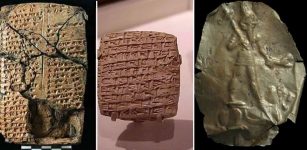 Kültepe: Once Part Of The Kingdom Of Hittites And The Center of a complex network of Assyrian trade colonies in the 2nd millennium B.C.
Civilizations | Oct 16, 2015
Kültepe: Once Part Of The Kingdom Of Hittites And The Center of a complex network of Assyrian trade colonies in the 2nd millennium B.C.
Civilizations | Oct 16, 2015 -
 On This Day In History: Battle Of Vinegar Hill Took Place – On June 21, 1798
News | Jun 21, 2017
On This Day In History: Battle Of Vinegar Hill Took Place – On June 21, 1798
News | Jun 21, 2017 -
 Older Than Dracula: In Search Of The English Vampire
Myths & Legends | Dec 9, 2022
Older Than Dracula: In Search Of The English Vampire
Myths & Legends | Dec 9, 2022 -
 Why Was The Urnes Brooch So Popular At The End Of The Viking Age?
Archaeology | May 27, 2023
Why Was The Urnes Brooch So Popular At The End Of The Viking Age?
Archaeology | May 27, 2023 -
 Vikings: Facts And History About The Tough Norse Seafaring People
Ancient History Facts | Mar 13, 2017
Vikings: Facts And History About The Tough Norse Seafaring People
Ancient History Facts | Mar 13, 2017 -
 Secrets Behind 2,000-Year-Old Roman Water Management Revealed
Ancient Technology | Aug 4, 2023
Secrets Behind 2,000-Year-Old Roman Water Management Revealed
Ancient Technology | Aug 4, 2023 -
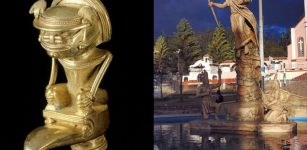 Legend Of Bochica And Mysterious Ancient Stone Structures In Colombia
Featured Stories | Jun 5, 2016
Legend Of Bochica And Mysterious Ancient Stone Structures In Colombia
Featured Stories | Jun 5, 2016 -
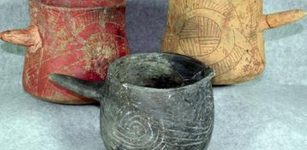 Cocoa, Caffeinated ‘Black Drink’ Widely Used In Native American Societies
News | Sep 8, 2015
Cocoa, Caffeinated ‘Black Drink’ Widely Used In Native American Societies
News | Sep 8, 2015 -
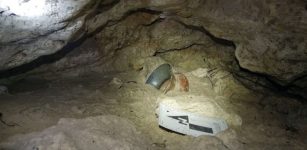 Completely Intact 2,000-Year-Old ‘Chocolatier Style’ Pot Discovered In Mexican Cave
Archaeology | Jul 30, 2022
Completely Intact 2,000-Year-Old ‘Chocolatier Style’ Pot Discovered In Mexican Cave
Archaeology | Jul 30, 2022 -
 Mysterious Death Of Amy Robsart – Murder, Accident Or Suicide?
Featured Stories | Jun 20, 2024
Mysterious Death Of Amy Robsart – Murder, Accident Or Suicide?
Featured Stories | Jun 20, 2024 -
 Achaemenid Empire Was The World’s Largest Ancient Empire
Ancient History Facts | Mar 26, 2016
Achaemenid Empire Was The World’s Largest Ancient Empire
Ancient History Facts | Mar 26, 2016 -
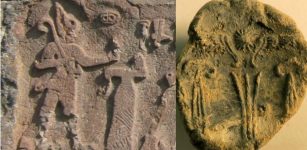 Ancient Clay Seals That Could Re-Write Hittite History Discovered In Kayalıpınar, Turkey
Archaeology | Sep 14, 2023
Ancient Clay Seals That Could Re-Write Hittite History Discovered In Kayalıpınar, Turkey
Archaeology | Sep 14, 2023 -
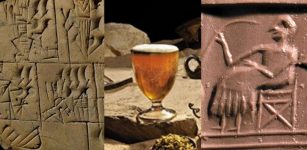 Ninkasi – Sumerian Goddess Of Beer And Alcohol – The Hymn To Ninkasi Is An Ancient Recipe For Brewing Beer
Featured Stories | Feb 27, 2019
Ninkasi – Sumerian Goddess Of Beer And Alcohol – The Hymn To Ninkasi Is An Ancient Recipe For Brewing Beer
Featured Stories | Feb 27, 2019 -
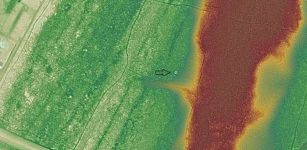 Satellites Discover Over 160 Hidden Ancient Mounds In North America
Archaeology | Aug 2, 2018
Satellites Discover Over 160 Hidden Ancient Mounds In North America
Archaeology | Aug 2, 2018




